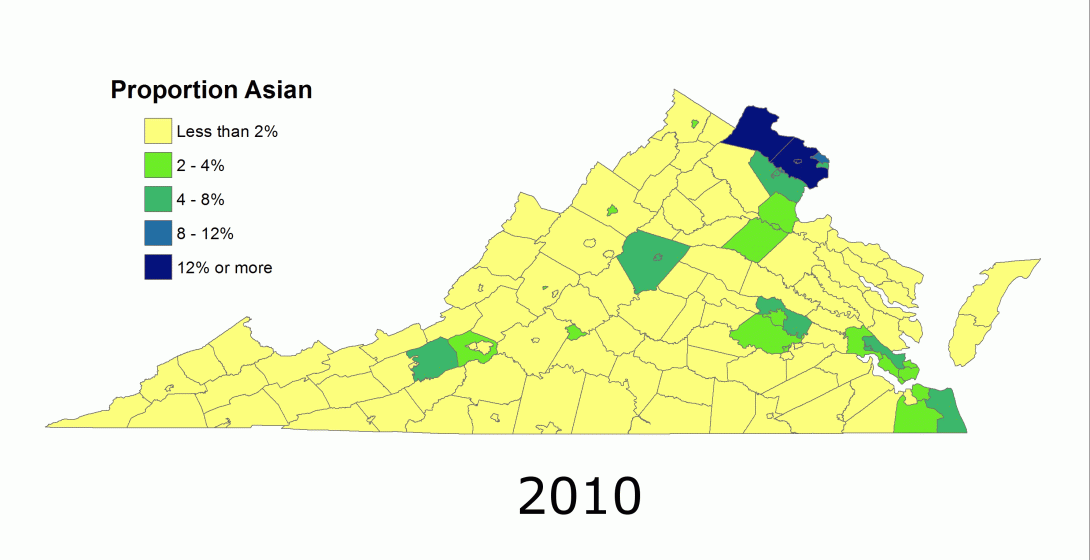Majority Minority by 2040?
Following the November election, much of the coverage focused on both the current and future impact of changing demographics. Changes in household structure and family formation, population aging, and increases in diversity are population trends that will continue to play out over the coming decades. Virginia’s demographic landscape, like the nation’s, is projected to shift substantially by 2040.
The map below shows the population proportion of Hispanics in each locality in the 2010 Census, and the projected proportion of Hispanics for 2020, 2030, and 2040. In 2010, Hispanic Virginians were most heavily concentrated in Northern Virginia, with additional concentrations in Richmond, Hampton Roads, the Winchester metropolitan area, and Accomack and Northampton Counties. Over the next 30 years, the Hispanic presence is projected to increase throughout the state (most localities are projected to be at least 6-12% Hispanic by 2040), with the largest concentrations remaining in the major urban centers and portions of the Eastern shore.

In 2010, Asian Virginians were primarily found in the urban crescent, with the highest concentrations in Northern Virginia. There were additional large populations of Asian Virginians around the University of Virginia (Charlottesville City and Albemarle and Greene Counties) and Virginia Tech (Roanoke City/County and Montgomery County). By 2040, the Asian population is projected to increase, but is projected to remain highly concentrated in these areas.

Given past trends and Virginia’s current population structure, it is unsurprising that Virginia is projected to become more diverse over the next 30 years. Why will this diversity increase?
- Asian and Hispanic immigrants are more likely to be of childbearing age, and so we will see more diversity among younger Virginians.
- Increases in intermarriage will yield increases in multiracial births.
- Continued immigration to Virginia.
- Less diverse, older cohorts dying and being replaced by more diverse cohorts (particularly by 2040).
Increases in diversity will be particularly marked among younger Virginians. In many localities, young Virginians may grow up in majority-minority communities; statewide, the population under 30 is projected to be majority minority by 2040. Of course, in many localities, particularly in Southwest Virginia and parts of the Valley region, the population is projected to remain fairly homogenous, with high proportions of non-Hispanic white residents.
How close will these projections capture what happens in coming years? Will projected changes increase the divide between the “two Virginias”? On these questions, only time will tell.
To read more about the Cooper Center’s population projections and access data for all localities, please visit our Population Projections page.


